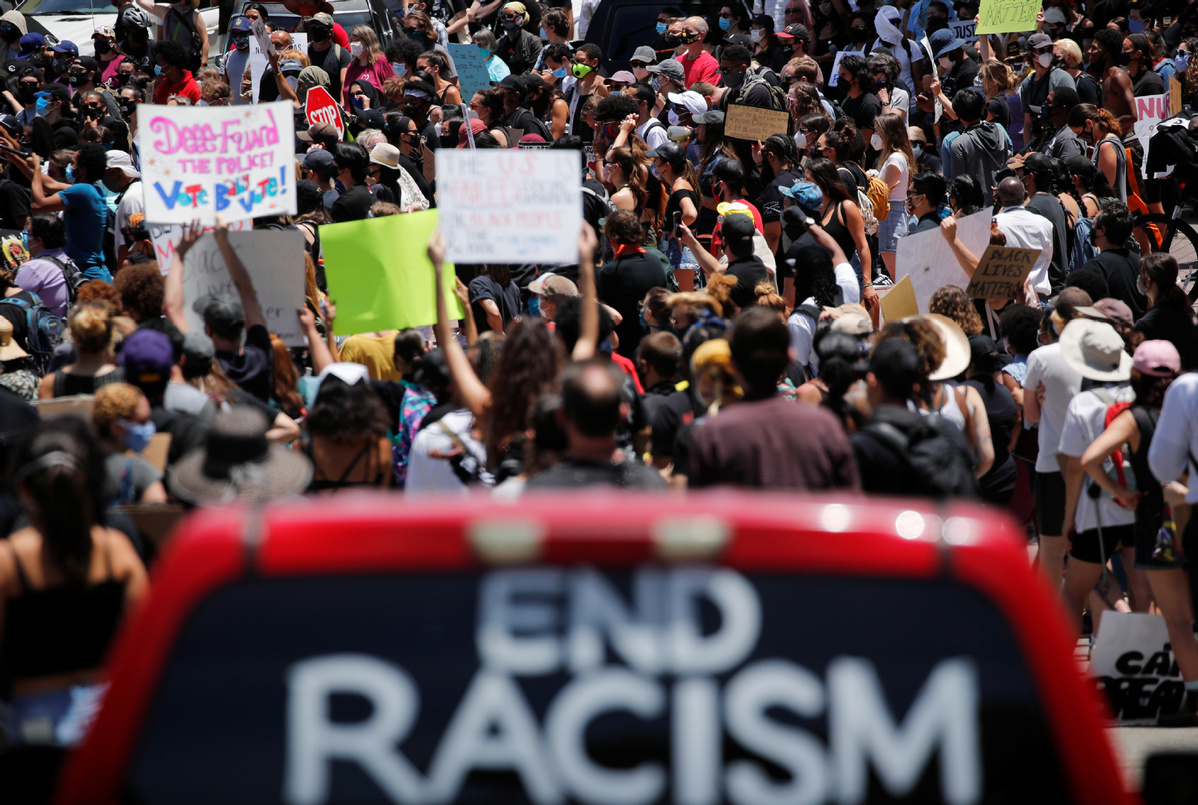America's unrest has been coming for a long time


Massive protests against racial injustice on a scale larger than even the anti-war movement of the late 1960s and early 1970s have spread across the United States. The agonizing death of George Floyd while in the custody of Minneapolis police has revealed to the world a long litany of police brutality exposing not only the deep-seated racism that proliferates across America, but the caste system maintained by it.
While long pent-up frustration with racial injustice may have ignited these protests, the underlying movement is far more complicated. These protests are an outcry against systemic injustice, and a caste rather than class system that has stagnated racial and income mobility, dashing hopes of what we once understood as the American Dream.
We once had a class system in America. You could work your way up from rags to riches. The American dream was built on the belief anyone can make it if they just work hard enough and play by the rules.
But the rules today are unfair and the people who are making it are doing so with unlimited debt finance and manipulation of eyeballs by social media corporations that are beholden to the state that controls the valve on unlimited debt-conundrum backed liquidity.
The scream from the street is a cry not only against racial injustice, but against system injustice that perpetuates a caste system where the rich become increasingly rich and the middle class diluted to join the poor, with lines of caste drawn around racial, neighborhood and income groups. Once saddled with personal debt there is no way out, because it digs deeper.
The protests began peacefully, and protesters have worked to maintain peaceful advocacy of change. However, many are asking if change is really possible. Those extreme moments when big corporation brand stores have been vandalized are not about just looting goods but throwing anger at a system that once promised free competition. But instead the system delivered corporate monopoly, perpetuated by capital markets where stock price buoyancy is assured through government debt-buy-backs of its own debt. That spiraled downward through the social and systemic layers handcuffing every household to debt.
While the talking heads on the financial networks tell us that we are really not in a recession, America has already been in a situation that some compare to the Great Depression of the 1930s. Ideologically driven wars bankrupted the nation that started them. Money printed on the back of debt saddling generations to come is paid in extravagant bonuses to already grossly wealthy investment bankers and Big Tech CEOs who created all this mess together with Wall Street kingmakers for their own aggrandizement.
So where did all of this begin and when did it start to incubate? In 1933, during the Great Depression, Congress passed the Glass-Steagall Act mandating separation of commercial and investment banking, protecting depositors from risky investments and speculation. It worked for half a century until during the 1980s, when Reagan market fundamentalism was at its height, bankers lobbied for its repeal. Democrats, embracing "neo-liberalism," wholeheartedly obliged. It was repealed under the Clinton administration in 1999.
Stock markets went berserk as all kinds of companies listed. The corporate sector was no longer evaluated on the basis of profit-and-loss, fundamental to real economics. Everything was about shareholders' value. Potential was the opportunity reflecting forward option puts and derivatives. Commercialization of internet shifted this to eyeballs and speculation on social media so-called "Big Tech". All of this was made possible only by massive amounts of government-sponsored debt-based liquidity.
When the house of cards came down during the sub-prime induced financial crisis of 2008, people lost homes, jobs, and took to the street. People called for change but they did not know what should be done or how to do it. Amidst swirls of idealism, they thought that change would occur. It did not.
Occupy movements across America were crushed. Soon they were gone.
Everyone got on with life and another 10-year cycle of debt-backed liquidity buoyed the markets. The rich became even richer and the Big Tech corporate monopolies cemented their grasp on markets, communities and eventually the minds of people themselves by controlling algorithms and big data. Soon it was not about the one percent but the one percent of the one percent who controlled America, the channels of distribution, the news and the minds of people. But people can think, and they can feel too.
As America burns in protest, riot and the opprobrium of police repression, coronavirus spreads amidst it all without the medical systems to cope when the aftershock sets in. It will ravage the poor and diverse communities who are protesting. Meanwhile, the stock market surges with gains unprecedented. Does this make sense? Wall Street is divorced from Main Street. That was what started everything in 2008 to begin with.
Deep down inside everyone knew all along that something was wrong with the system, but they could not quite articulate it. Now they are screaming it out loud for everyone to hear. For over a decade these movements have gone underground, dispersed, spread morphed into new movements and incubated in various forms. Their anguish and frustration from uncorrected justice and system default has earned compounded interest. Guess what? They are all back, and out in the street.
The author is senior international research fellow of Center for China and Globalization and author of A Time for Shambhala: Pandemic, Capital Collapse, and Recoding a New Planet Paradigm. The views do not necessarily reflect those of China Daily.

































